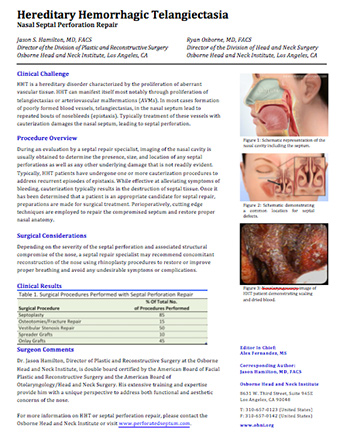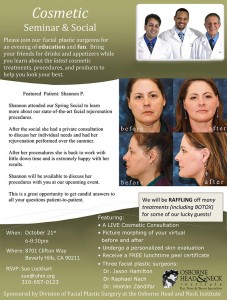- Hereditary Hemorrhagic Telangiectasia - May 25, 2016
- Hereditary Hemorrhagic Telangiectasia: Septal Perforation and Nose Bleeds - May 23, 2016
- Hereditary Hemorrhagic Telangiectasia: Epistaxis and Septal Perforation - May 18, 2016
- Wegener’s Granulomatosis: Autoimmune Disease and Multi-Focal Septal Perforation - May 9, 2016
- Kyle Korver: Facial Injury and Nasal Fracture - March 24, 2015
- Russell Westbrook: Facial Injury and Surgery - March 5, 2015
- Mega-perforation: Pushing the Limits of Septal Perforation Repair - November 26, 2014
- Septoplasty Complication and Septal Perforation - November 24, 2014
- Nose Picking (Rhinotillexis) and Septal Perforations: Why I should stop picking my nose…? - November 24, 2014
- Nasal Fractures, Septal Hematoma, and Septal Perforation: Simultaneous Rhinoplasty and Septal Perforation Repair - October 1, 2014
Nasal Septal Perforation Repair
| Jason S. Hamilton, MD, FACS Director of the Division of Plastic and Reconstructive Surgery Osborne Head and Neck Institute, Los Angeles, CA |
Ryan Osborne, MD, FACS Director of the Division of Head and Neck Surgery Osborne Head and Neck Institute, Los Angeles, CA |
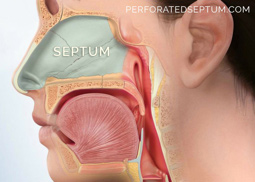
CLINICAL CHALLENGE
HHT is a hereditary disorder characterized by the proliferation of aberrant vascular tissue. HHT can manifest itself most notably through proliferation of telangiectasias or arteriovascular malformations (AVMs). In most cases formation of poorly formed blood vessels, telangiectasias, in the nasal septum lead to repeated bouts of nosebleeds (epistaxis). Typically treatment of these vessels with cauterization damages the nasal septum, leading to septal perforation.
PROCEDURE OVERVIEW
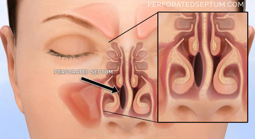
During an evaluation by a septal repair specialist, imaging of the nasal cavity is usually obtained to determine the presence, size, and location of any septal perforations as well as any other underlying damage that is not readily evident. Typically, HHT patients have undergone one or more cauterization procedures to address recurrent episodes of epistaxis. While effective at alleviating symptoms of bleeding, cauterization typically results in the destruction of septal tissue. Once it has been determined that a patient is an appropriate candidate for septal repair, preparations are made for surgical treatment. Perioperatively, cutting edge techniques are employed to repair the compromised septum and restore proper nasal anatomy.
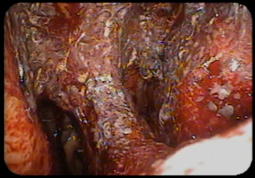
SURGICAL CONSIDERATIONS
Depending on the severity of the septal perforation and associated structural compromise of the nose, a septal repair specialist may recommend concomitant reconstruction of the nose using rhinoplasty procedures to restore or improve proper breathing and avoid any undesirable symptoms or complications.
CLINICAL RESULTS

SURGEON COMMENTS
Dr. Jason Hamilton, Director of Plastic and Reconstructive Surgery at the Osborne Head and Neck Institute, is double board certified by the American Board of Facial Plastic and Reconstructive Surgery and the American Board of Otolaryngology/Head and Neck Surgery. His extensive training and expertise provide him with a unique perspective to address both functional and aesthetic concerns of the nose.
For more information on HHT or septal perforation repair, please contact the Osborne Head and Neck Institute or visit www.perforatedseptum.com
Click here to download article PDF
